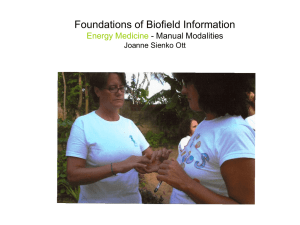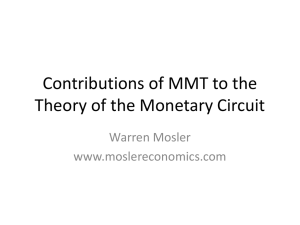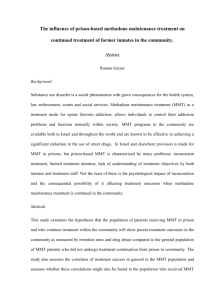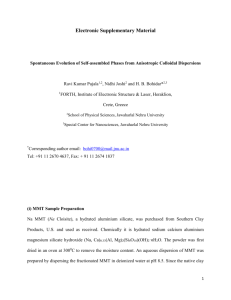Electronic Supplementary Material 1. Rheology of pure clay
advertisement
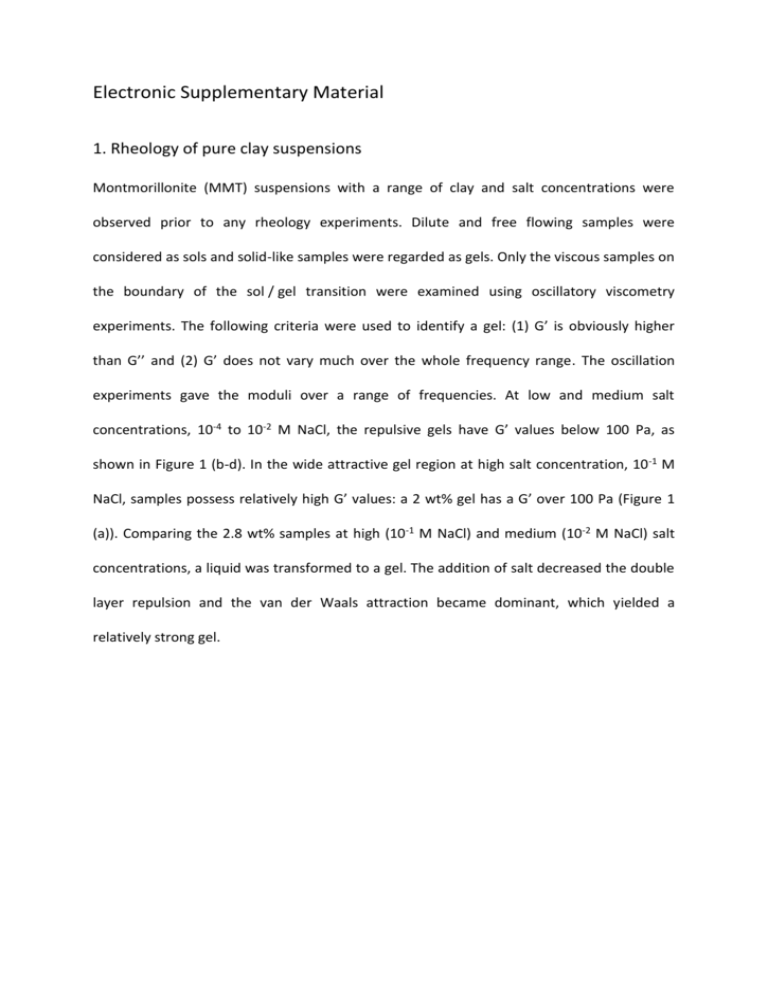
Electronic Supplementary Material 1. Rheology of pure clay suspensions Montmorillonite (MMT) suspensions with a range of clay and salt concentrations were observed prior to any rheology experiments. Dilute and free flowing samples were considered as sols and solid-like samples were regarded as gels. Only the viscous samples on the boundary of the sol / gel transition were examined using oscillatory viscometry experiments. The following criteria were used to identify a gel: (1) G’ is obviously higher than G’’ and (2) G’ does not vary much over the whole frequency range. The oscillation experiments gave the moduli over a range of frequencies. At low and medium salt concentrations, 10-4 to 10-2 M NaCl, the repulsive gels have G’ values below 100 Pa, as shown in Figure 1 (b-d). In the wide attractive gel region at high salt concentration, 10 -1 M NaCl, samples possess relatively high G’ values: a 2 wt% gel has a G’ over 100 Pa (Figure 1 (a)). Comparing the 2.8 wt% samples at high (10-1 M NaCl) and medium (10-2 M NaCl) salt concentrations, a liquid was transformed to a gel. The addition of salt decreased the double layer repulsion and the van der Waals attraction became dominant, which yielded a relatively strong gel. 105 104 Moduli (Pa) 103 102 101 100 G' MMT 2 wt% G'' MMT 2 wt% G' MMT 2.5 wt% G'' MMT 2.5 wt% G' MMT 6.7 wt% G'' MMT 6.7 wt% 10-1 10-2 10-3 10-2 10-1 100 101 Frequency (Hz) (a) 103 102 101 Modulus (Pa) 100 10-1 10-2 10-3 G' MMT 2.8 wt% G'' MMT 2.8 wt% G' MMT 3.5 wt% G'' MMT 3.5 wt% G' MMT 4 wt% G'' MMT 4 wt% 10-4 10-5 10-6 10-2 (b) 10-1 100 Frequency (Hz) 101 103 102 Moduli (Pa) 101 100 10-1 10-2 G' MMT 3.4 wt% G'' MMT 3.4 wt% 10-3 10-2 10-1 100 101 Frequency (Hz) (c) 103 102 Modulus (Pa) 101 100 10-1 10-2 G' MMT 3.4 wt% G'' MMT 3.4 wt% 10-3 10-2 (d) 10-1 100 101 Frequency (Hz) Figure 1. Oscillation experiments: Moduli against frequency of MMT suspensions with (a) 0.1 M (b) 0.01 M (c) 0.001 M (d) 0.0001 M NaCl. 2. Rheology of surfactant treated clay The effect of adsorption of the surfactant M1000 on G’ and G’’ is significant at medium and low salt concentrations. MMT suspensions start to behave like a gel above 3 wt% clay at 10 -2 and 10-3 M NaCl without M1000. At a surface coverage equivalent to 0.4 CEC, M1000 transformed even 5.6 wt% clay samples to a liquid, with comparably low G’ and G’’, increasing over frequency at both concentrations, as shown in Figure 2 (b) and (c). At very low salt concentration (10-4 M NaCl), where repulsion between particles is strong, the effect of M1000 is not obvious. A weak gel is formed at all clay concentrations tested, from 4 wt% to 6.1 wt%. The values of G’ and G’’ increase with rising clay concentration but the increase is small considering the increase in clay concentration. The G’ values of 5.5 wt% and 6.1 wt% clay are similar to that of a 3.6 wt% MMT gel without M1000. Therefore, M1000 has an effect to reduce the moduli of the gel, but not yet transform it to a liquid. At high salt concentration, both the 4 and 6.7 wt % gels possess high moduli. The effect of M1000 on the moduli and phase diagram is more pronounced at medium salt concentrations. 105 Modulus (Pa) 104 103 102 G' MMT 4 wt% G'' MMT 4 wt% G' MMT 6.7wt% G'' MMT 6.7wt% 101 100 10-2 10-1 100 101 Frequency (Hz) (a) 101 Modulus (Pa) G' MMT 5.6 wt% G'' MMT 5.6 wt% 100 10-1 10-2 (b) 10-1 100 Frequency (Hz) 101 102 G' MMT 5.6 wt% G'' MMT 5.6 wt% Modulus (Pa) 101 100 10-1 10-2 10-1 100 101 Frequency (Hz) (c) 102 Modulus (Pa) G' MMT 4 wt% G'' MMT 4 wt% G' MMT 5.6 wt% G'' MMT 5.6 wt% G' MMT 6.1 wt% G'' MMT 6.1 wt% 101 100 10-2 (d) 10-1 100 101 Frequency (Hz) Figure 2. Rheological measurements: Moduli against frequency of M1000 modified MMT suspensions with (a) 0.1 M (b) 0.01 M (c) 0.001 M (d) 0.0001 M NaCl. 3. Polarising microscopy Dried bare clay suspensions were observed by polarising microscopy. The string-like structures in the bare clay sample are highly birefringent as shown in Figure 3 (a). A polarising microscope image of the structure obtained after drying a clay sample treated with M1000 (Figure 3 (b)) is also shown and no large scale structures are seen. However, some bright specs are visible, indicating the presence of stacks of clay particles. Figure 3. Polarising microscopy images of dried 1 wt% MMT aqueous suspensions at 0.0001 M NaCl and (a) no M1000; (b) 0.4 CEC M1000.
